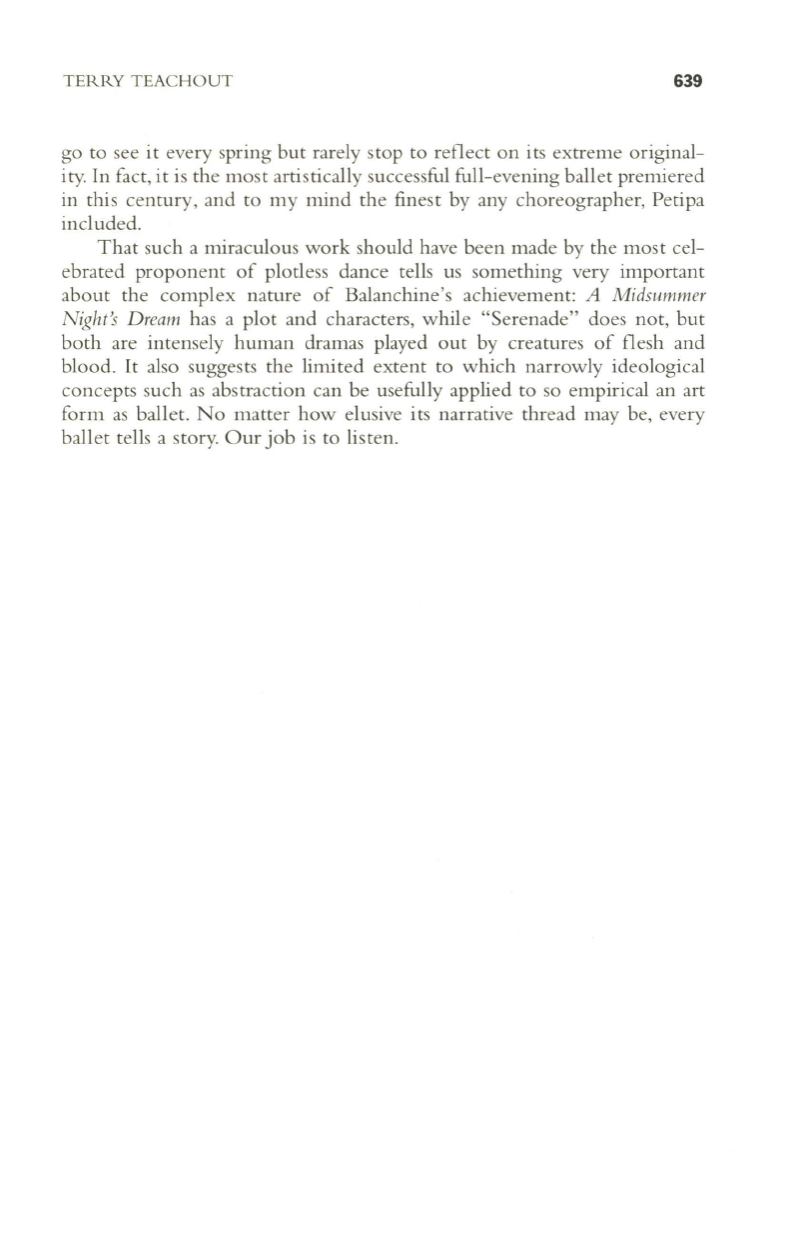
TERRY TEACHOUT
639
go to see it every spring but rarely stop to reflect on its extreme original–
ity.
In
fact, it is the most artistically successful full-evening ballet prenliered
in this century, and
to
my mind the finest by any choreographer, Petipa
included.
That such a miraculous work should have been made by the most cel–
ebrated proponent of plotless dance tells us something very important
about the complex nature of Balanchine's achievement:
A Midsummer
Night's Dream
has a plot and characters, while "Serenade" does not, but
both are intensely human dramas played out by creatures of flesh and
blood.
It
also suggests the linlited extent to which narrowly ideological
concepts such as abstraction can be usefully applied to so empirical an art
form as ballet. No matter how elusive its narrative thread may be, every
ballet tells a story. Our job is to listen.


